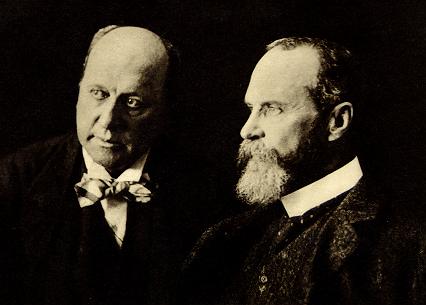"With the government now debating the release of the second half of the TARP funds, perhaps now is as good a time as any to look at how successfully spent the first $350 Billion dollars were.
The evidence is not very favorable.
What I can say without reservation is that the TARP spending prevented large brokers and banks from going to zero. Since the legislation was passed in the Fall, there has not been a major disruptive bankruptcy.( I AGREE )
Sure, the FDIC had to take over a few institutions that were overdue for the long dirt nap anyway, but the sort of market roiling Bear Steans collapse, and the subsequent Q3 Lehman/AIG/CitiGroup disasters have at least stopped.
This is not, to be clear, any declaration that the TARP has been a success. We have avoided financial armageddon, but other than that, it has been an abject failure. ( TRUE )
The short list of criticisms starts with the ad hoc way it was formed, and foisted on the public. There were no clear goals, no over-arching strategy, no milestones to evaluate its success.
Let’s take a quick look at some of the shortcomings and misfires the TARP has yielded:
1. No Strategic Plan: What was the original purpose of the TARP? Its hard to say, other than it was of the greatest importance it be passed with minimum debate and even less information. Without stated objectives, its difficult to evaluate whether it is achieving those goals.
2. Methods and Tactics: By what method was the TARP to be implemented? Buy distressed assets? Recapitalize the banks? Increase lending to businesses and consumers? Rescue foreclosed homeowners? Stimulate the economy? The constantly morphing objectives make it hard to take the original claims very seriously.
3. No Triage: There seemed to be no evaluative method in determining which banks should be saved and which should be put down. If the goal was to strengthen the financial sector, then the approach is to help those that can be strengthened, and have an orderly liquidation of those that cannot. Merely throwing money at weak and dying banks is no long term strategy.
4. Wasting Taxpayer Monies: Why did private investors like Warren Buffett get so much of a better deal than Uncle Sam? Its clear to me that both Treasury and the Fed lack the expertise to negotiate these investments. Instead, set up a matching investment. Let those in the private sector with the expertise to do so make substantial arms-length investments, with the the US matching ( at 10 or even 20X) on the same terms.
5. Transparency, Accountability, Responsibility: How monies have been spent by the Treasury department (and Fed) should be a textbook example of government accountability and transparency. Its not, and there is no good reason why. The Fed is even worse, refusing to release any details, which has led to lawsuits being filed by Bloomberg and Fox News to get the specific public information.
6. Evaluating Progress: All major programs should have some method of evaluating if they are achieving their goals. This is missing from the TARP, and its why so many people have no idea if it has been successful or not.
7. Moral Hazard: Why are we rewarding companies that were poorly managed, reckless money losers? All of the TARP recipients should have anyone senior management associated with the bad investments fired; bonuses suspended, shareholders wiped out. How are these firms paying dividends with government money? Where are the clawbacks of bonuses from Stan O’Neill, Angelo Mozilo, Chuck Prince? That the people responsible for the mess are even remotely profiting from it is simply unconscionable.
As bad as the $700 plus billion expnditures have been, the real damage lay in the future. When in doubt, traders will go bigger and more reckless than ever before. That is the terrible lessons of the TARP: Make sure you screw up big enough to get the taxpayer to rescue you . . ."
Thursday, October 2, 2008
How I've Approached The Plans Being Put Forward
In any case, I accept that there is a difference between politics and political theory. Politics is the art of the possible. Political Theory is the view of the government that you would ideally like to see.
In the current crisis, I acknowledged two plans as having some merit, and fulfilling my requirement that any plan be clear and understandable:
1) A totally free market plan.
2) A version of the Swedish Plan.
In my mind, there are three points that are informing my views on which plan to favor:
A) There will be a government intervention of some sort, undoubtedly large.
B) Because crises such as these bring about government intervention.
C) If there is government intervention, it should be for as broad a purpose as possible and be as thrifty with the taxpayers money as possible.
Based on these assumptions, I favor a version of the Swedish Plan.
It's not that I don't see other plans as possibly working, but hybrid/compromise plans are generally:
1) Easier to manipulate by special interests.
2) Harder to determine what worked and what didn't.
3) Riskier financially.
That's how I've approached this crisis.
If you read my blog, you will notice that I mentioned all of these problems in October.







































No comments:
Post a Comment